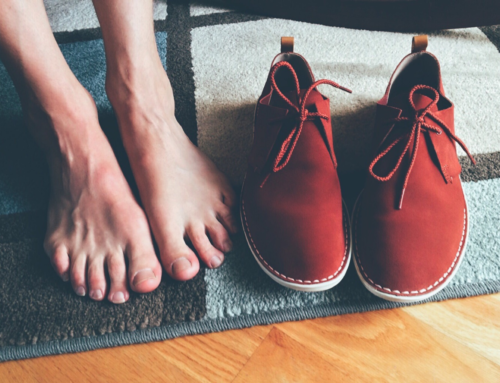Hereditary nail fungus is possible. When one person has nail fungus, it is common for members of their family to have it as well. Because of this, it is a common misconception that toenail fungus is hereditary. While family cases of toenail fungus are frequent, this is because of the nature of the fungal spores themselves rather than indicative of any underlying predispositions.
How heredity works
Genes alone can’t account for fungal infection; this condition occurs when a fungus from outside of your body invades your nail bed. Since the body doesn’t produce the fungus itself, this condition is never the consequence of familial inheritance. With that being said, there are certain hereditary factors that can contribute to nail fungus infection. These factors may predispose you to fungal infection by making your nail bed a more suitable environment for fungal growth.
In particular, certain hereditary immune disorders can increase susceptibility to fungal infections. These disorders lower your body’s ability to fight off the fungus once it enters the nail, which makes it easier for the fungus to grow. Families with hereditary immune deficiencies can take care to avoid environments where fungus thrives and maintain proper hygiene. These families should also avoid sharing nail clippers, shoes, or socks.
Hereditary Nail Fungus
It is not surprising that nail fungus often affects entire families. After all, it is an infectious condition. It is similar to how, when one person in a family gets the flu or chickenpox. Usually, the entire family will catch it as the virus is transmitted from person to person. Similarly, when one person catches nail fungus somewhere outside the house, they’re depositing fungal spores everywhere. Which then goes on to infect everyone else. This gives the illusion that nail fungus is genetic.
Nail fungus is genetic in this sense. A lowered immunity can make it more difficult for your body to fight off certain infections. This puts you at a higher risk of getting nail fungus than your counterpart from other families. Genetics does play a part in your immunity. That is how nail fungus, or rather a predisposition to nail fungus, is genetic to an extent. Certain conditions, like diabetes, also put you at a greater risk of toenail fungus. Other foot-related problems and diabetes tend to run in families as well. In this way, nail fungus can be genetic.

Are Ingrown Nails also Hereditary?
A common question that is doctors always get is Are Ingrown Nails Hereditary? Did you know that ingrown toenails are one of the most common problems that podiatrists and foot specialists see in their clinics? That’s right, common cases include improper trimming or filing of the nail, damage or trauma, shoes that are fitted incorrectly, and fungal infections.
One of the leading factors of ingrown nails is simply your genetics. If the natural shape of the nail is more horseshoe-like rather than flat. Then it’s more typical for the sides of the nails to dig into the skin. Attempting to fix an ingrown nail can sometimes allow for infection. And can almost always leave a small piece of the nail if done incorrectly which can irritate the condition.
There is good news though, fixing ingrown nails can be very simple with an easy procedure done in your podiatrist’s office. If needed, the toe is numbed with a local anesthetic. Once that is done your toe is left with no feeling during the duration of the nail extraction. If you have chronic ingrown nail problems your podiatrist may use a chemical to kill the root of the nail to prevent it from returning to cause future problems.
Don’t forget to trim your nails in a generally straight line across the nails and round corners for the edges. Also, make sure not to let your nails grow too long. Keeping your nails long can invite shoe and sock dust and dirt as well as the build-up of fungus and bacteria underneath the nail. Be sure to always wear comfortable shoes, never anything that is too tight or restraining. And be sure to wash your feet with soap and water while changing your socks regularly!
Are you more likely to have nail fungus if your family members are infected?
If there is someone in your family who suffers from nail fungus, you are most likely going to struggle with it as well due to the fungus’s infectious nature. But family history is not always a guarantee that you, too, will develop the fungus. But certain hereditary factors can make you more susceptible to developing infections such as nail fungus. Sounds a little confusing? Here’s an example. Diabetics usually develop toenail fungus due to their decreased circulation in the feet. Diabetes tends to run in families and is a trait that can be passed down from parent to child. It can create a hereditary predisposition to nail fungus and infections as well. Also, some people are just more prone to infections than others; this is also something that can run in families.
Who is to blame for your nail fungus?
Some people strongly believe that nail fungus infections are strictly hereditary and are entirely to blame for their infection, but that’s not always the case. Usually, if you have a family member or two that suffers from a nail fungus infection and you’ve recently picked it up and you are all living under the same household, then you most likely developed the fungus on your own living in closed quarters with the fungus. Nail fungus is extremely infectious, and most people tend to overlook that.
Treatment Options
- Topical treatments: Topical nail fungus treatments include over-the-counter creams, sprays, and solutions. These treatments are the least effective, having a cure rate of less than 5%. These treatments are ineffective because most topical medications aren’t able to penetrate through the nails to kill the fungus.
- Oral Medication: This is the most common option, despite the fact that it has extreme side effects, which include liver toxicity and even possibly liver damage, ultimately leading to death or the necessity of a liver transplant. While this may be the most common nail fungus treatment option, it is the one with the most drawbacks. And on top of this, the average cure rate for oral pills is only 60%!
- Laser Treatment: Laser is the most modern and technologically advanced nail fungus treatment option, with the greatest success rate. It typically only takes one treatment with no downtime afterward, while other lasers may require up to four sessions.

Laser Treatment for Toenail Fungus
More commonly than hereditary immunodeficiencies, families may infect each other with fungus because of close proximity. Toenail fungus can survive on floors, nail clippers, and carpets. Because family members tend to walk barefoot in their homes and share nail grooming tools, nail fungus can easily spread within a family. This is the main reason why it is common for multiple members of the same family to catch a toenail fungus. If you or a family member thinks they have a toenail fungus, you should seek out an FDA-approved treatment by a licensed podiatrist.
The PinPointe Laser is the best option to treat toenail fungus since it only requires one treatment and has no side effects. Our nail doctor in Austin, TX, recommends this laser treatment. The PinPointe Laser treatment has the highest cure rate in the market. It has no side effects and no recovery period. As a result, you can go about your daily activities right after. Also, it is not painful. To schedule a consultation for the PinPointe laser treatment with a podiatrist, give us a call at 1-(800) 672-0625 or visit our website for more information.




